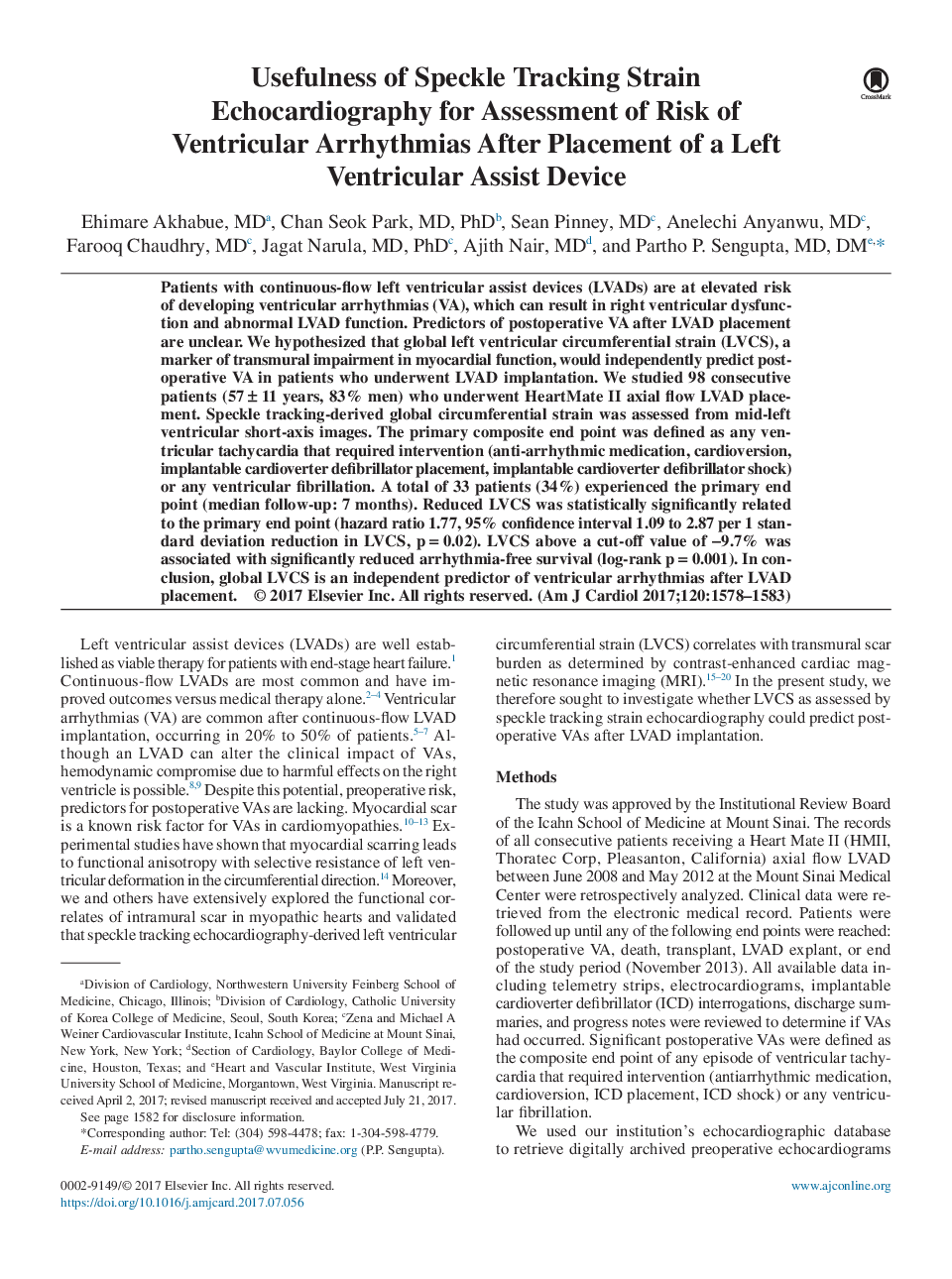| Article ID | Journal | Published Year | Pages | File Type |
|---|---|---|---|---|
| 8651693 | The American Journal of Cardiology | 2017 | 6 Pages |
Abstract
Patients with continuous-flow left ventricular assist devices (LVADs) are at elevated risk of developing ventricular arrhythmias (VA), which can result in right ventricular dysfunction and abnormal LVAD function. Predictors of postoperative VA after LVAD placement are unclear. We hypothesized that global left ventricular circumferential strain (LVCS), a marker of transmural impairment in myocardial function, would independently predict postoperative VA in patients who underwent LVAD implantation. We studied 98 consecutive patients (57â±â11 years, 83% men) who underwent HeartMate II axial flow LVAD placement. Speckle tracking-derived global circumferential strain was assessed from mid-left ventricular short-axis images. The primary composite end point was defined as any ventricular tachycardia that required intervention (anti-arrhythmic medication, cardioversion, implantable cardioverter defibrillator placement, implantable cardioverter defibrillator shock) or any ventricular fibrillation. A total of 33 patients (34%) experienced the primary end point (median follow-up: 7 months). Reduced LVCS was statistically significantly related to the primary end point (hazard ratio 1.77, 95% confidence interval 1.09 to 2.87 per 1 standard deviation reduction in LVCS, pâ=â0.02). LVCS above a cut-off value of â9.7% was associated with significantly reduced arrhythmia-free survival (log-rank pâ=â0.001). In conclusion, global LVCS is an independent predictor of ventricular arrhythmias after LVAD placement.
Related Topics
Health Sciences
Medicine and Dentistry
Cardiology and Cardiovascular Medicine
Authors
Ehimare MD, Chan MD, PhD, Sean MD, Anelechi MD, Farooq MD, Jagat MD, PhD, Ajith MD, Partho P. MD, DM,
